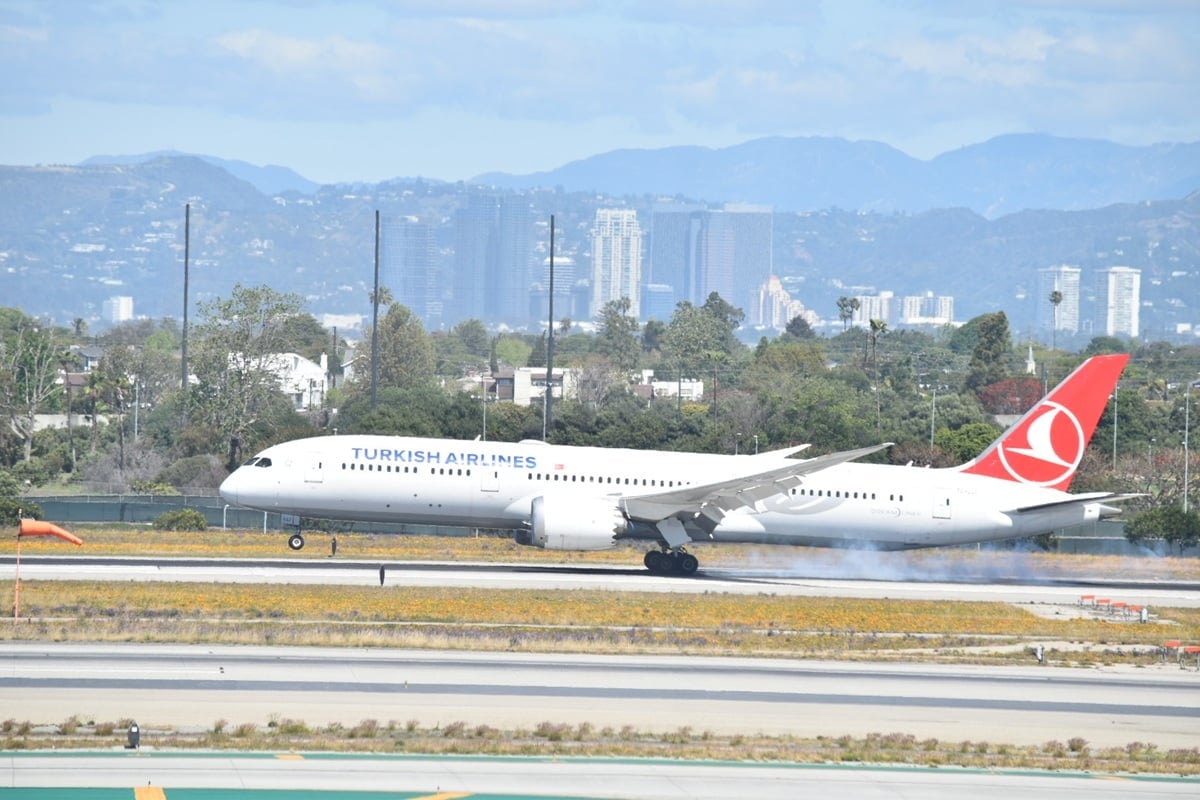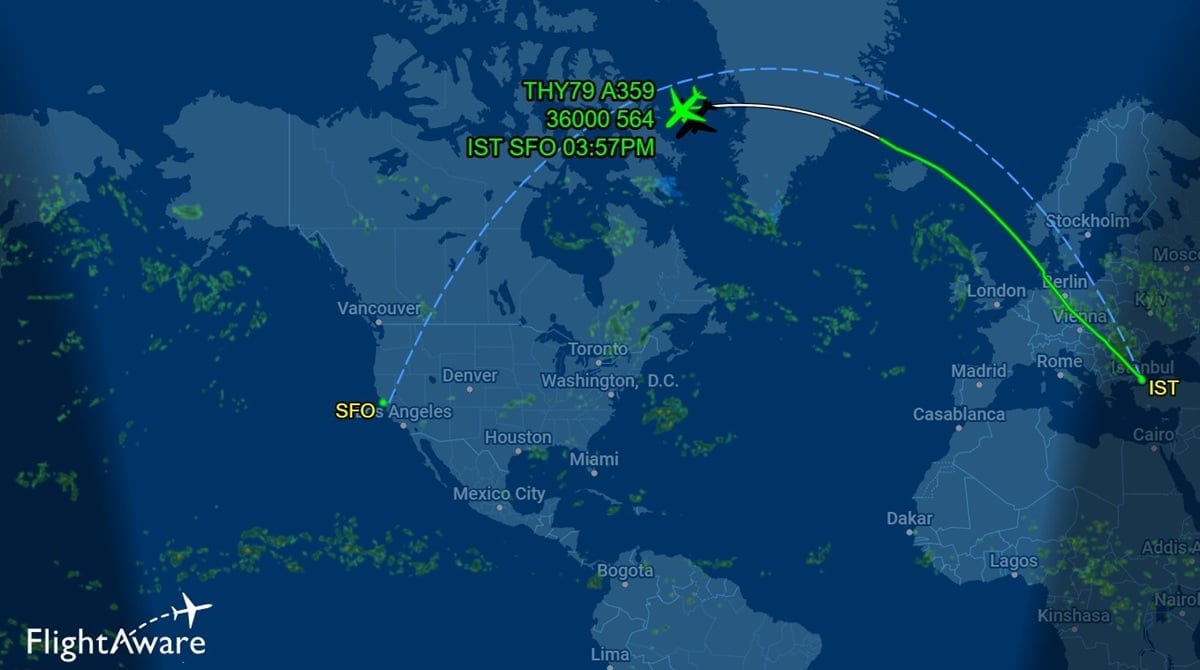A Turkish Airlines Airbus A350 (flight TK79) from Istanbul (IST) to San Francisco (SFO) diverted to Chicago O’Hare (ORD) on July 13 following a tragic in-flight medical emergency.
 According to Aviation A2Z, the incident happened over Greenland. The crew initially planned to divert to Reykjavik (KEF), but “the passenger’s condition worsened, resulting in their unfortunate passing, the necessity for an urgent diversion diminished. Consequently, the decision was made to continue toward North America rather than divert outside the US airspace.”
According to Aviation A2Z, the incident happened over Greenland. The crew initially planned to divert to Reykjavik (KEF), but “the passenger’s condition worsened, resulting in their unfortunate passing, the necessity for an urgent diversion diminished. Consequently, the decision was made to continue toward North America rather than divert outside the US airspace.”
What surprised me is that if the plane had continued on to San Francisco, it might have simplified matters for the family of the deceased as well as other passengers. Since the flight was cruising near the North Pole, diverting to Chicago saved less than an hour compared to continuing on to San Francisco. However, the four-hour flight from Chicago to San Francisco means the overall travel time and logistics don’t quite add up.
 See the FlightAware screenshot above of the map and the flying times below.
See the FlightAware screenshot above of the map and the flying times below.
 These situations are always heartbreaking. If the passenger had still been alive, I would have fully supported a diversion, since minutes can save lives. But in this tragic case, the outcome had unfortunately already been decided.
These situations are always heartbreaking. If the passenger had still been alive, I would have fully supported a diversion, since minutes can save lives. But in this tragic case, the outcome had unfortunately already been decided.
Sadly, medical emergencies on flights happen more often than most realize. I recently came across a Reddit thread titled: “Halfway across the Pacific and someone on our flight just passed away.” The Redditor described how medical professionals onboard performed CPR for 30–40 minutes, while the flight crew managed to keep other passengers calm and comfortable during the ordeal.
Halfway across the pacific and someone on our flight just passed away
byu/jyguy inunitedairlines
Other commenters shared similar experiences:
@Dasuave wrote, “Happened to me on a flight from MIA to EWR. Three doctors stepped up to help. The whole cabin was tense, but some passengers just tried to stay calm and out of the way.”
@Bullgod55435 said, “I was on a flight from DEN to IAH when someone had a heart attack. Thankfully, the person was stabilized and taken off on a stretcher upon landing.”
I was once on a British Airways flight from London (LHR) to Los Angeles (LAX) where a medical emergency forced a diversion to Edmonton (YEG). No one complained because the person was still alive and receiving care.
It’s incredibly difficult to be on a plane when a passenger passes away, especially if they’re sitting nearby. Some airlines like Singapore Airlines have a “corpse cupboard” on long-haul flights to respectfully handle deceased passengers. Others might move the body to the back galley or a vacant first-class seat and cover it with a sheet. Fortunately, I’ve never witnessed a death aboard a flight and hope I never do (knock on wood).
Cruise ships also have morgues onboard, as @adamosity1 pointed out on the Reddit thread, “Worked on a cruise ship and especially on a world voyage we had our share of passenger deaths—it’s simple math that if you have 2500 guests with an average age of over 70 for 4 months that not everyone will finish…”
Let’s hope the passenger who passed away lived a full and happy life and my sincere condolences to their friends and family.
KEEP READING
–How to Save Money With a Secret Third Carry-On
–How to Use Your Wireless Headphones to Watch In-Flight Movies
–10 Airport Security Hacks Every Traveler Should Know
–How to Get the Best Coach Seat on the Plane
–The Sleep Hack Every Traveler Needs to Know
Want more travel news, tips and deals? Sign up to Johnny Jet’s free newsletter and check out these popular posts: The Travel Gadget Flight Attendants Never Leave Home Without and 12 Ways to Save Money on Baggage Fees. Follow Johnny Jet on MSN, Facebook, Instagram, Pinterest, and YouTube for all of my travel posts.



